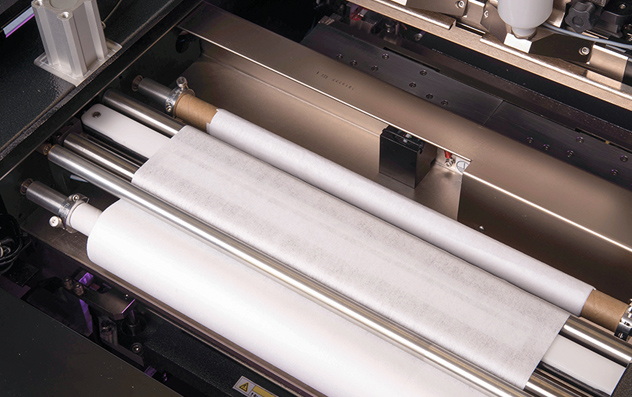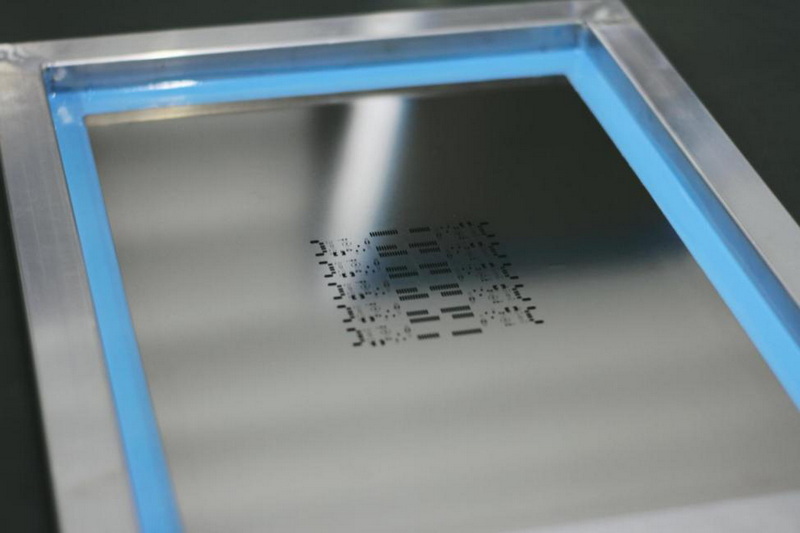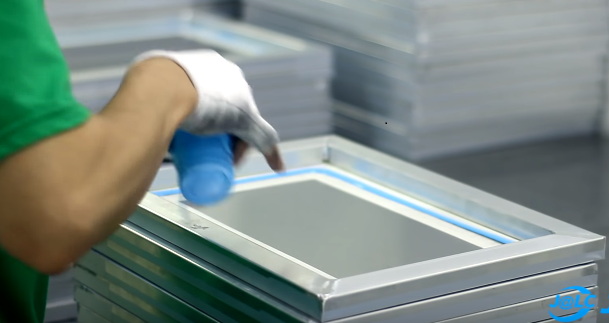Content Menu
● Understanding SMT Stencils and Their Critical Role
● Common SMT Production Defects Linked to Stencil Contamination
● What Are SMT Stencil Clean Rolls?
>> Key features of SMT stencil clean rolls include:
● How SMT Stencil Clean Rolls Reduce Production Defects
>> Benefits include:
● Material Technology Behind SMT Stencil Clean Rolls
>> The fiber structure is designed to balance:
● Integration of SMT Stencil Clean Rolls in Production Lines
>> Best practices for using SMT stencil clean rolls include:
● Additional Stencil Cleaning Methods and Their Relation to Clean Rolls
● Case Studies and Industry Insights
● Conclusion
● FAQ
>> 1. What materials are SMT stencil clean rolls made from?
>> 2. How often should SMT stencil clean rolls be replaced during production?
>> 3. Can SMT stencil clean rolls be used without solvents?
>> 4. Are SMT stencil clean rolls compatible with automated cleaning systems?
>> 5. What defects can SMT stencil clean rolls help prevent?
● Citations:
Surface Mount Technology (SMT) is a fundamental process in modern electronics manufacturing, enabling the precise placement of components on printed circuit boards (PCBs). The quality of solder paste application, a critical step in SMT, depends heavily on the cleanliness and condition of the stencil used to apply the paste. Contaminated or clogged stencils can cause a variety of production defects, leading to increased rework, scrap, and reduced yields. This article delves into the role of SMT stencil clean rolls in maintaining stencil cleanliness, thereby reducing defects and improving manufacturing efficiency.

Understanding SMT Stencils and Their Critical Role
An SMT stencil is a thin metal sheet with apertures that correspond to the PCB pads where solder paste is deposited. The stencil controls the volume and placement of solder paste, which is essential for forming reliable solder joints during reflow. Any contamination or residue buildup on the stencil, especially on its underside, can block apertures or smear paste, resulting in defects such as bridging, solder balls, and insufficient solder joints.
Common SMT Production Defects Linked to Stencil Contamination
Several defects in SMT assembly trace back to stencil cleanliness issues:
- Bridging: Occurs when excess solder paste connects adjacent pads, causing shorts.
- Solder Balling: Small spheres of solder form due to paste residue or contamination.
- Insufficient Solder: Clogged stencil apertures reduce paste volume, leading to weak joints.
- Smearing: Paste spreads beyond intended areas, often from stencil residue.
- Misprints: Inaccurate paste placement caused by stencil clogging or contamination.
These defects compromise product reliability and increase production costs through rework and scrap.
What Are SMT Stencil Clean Rolls?
SMT stencil clean rolls are specialized wiping materials designed specifically for cleaning the underside of SMT stencils during the solder paste printing process. They are made from a carefully engineered blend of fibers—typically 55% cellulose and 45% polyester or polypropylene—that provide high absorbency and durability without shedding lint or damaging the stencil surface[1][5].
Key features of SMT stencil clean rolls include:
- High Absorbency: Can absorb up to 5.5 times their weight in liquid, efficiently removing solder paste residues[5].
- Lint-Free: Prevents fiber contamination that could cause defects.
- ESD Safe: Protects sensitive electronic components from electrostatic discharge during cleaning[1][7].
- Durability: Resistant to tearing and abrasion, ensuring consistent cleaning performance without damaging stencil edges[3].
- Solvent Compatibility: Can be used dry or with cleaning solvents, though many modern rolls clean effectively without solvents[1][3].
How SMT Stencil Clean Rolls Reduce Production Defects
During SMT printing, solder paste residue accumulates on the stencil underside, clogging apertures and causing printing defects. Using SMT stencil clean rolls to wipe the stencil between print cycles removes this residue, ensuring each print deposits the correct amount of solder paste.
Benefits include:
- Minimized Bridging and Solder Balling: Removing excess paste and contaminants prevents unintended solder connections and solder balls[1][7].
- Improved Paste Transfer: Clean apertures allow paste to release cleanly onto PCB pads, improving joint quality[1][2].
- Reduced Misprints and Smearing: Consistent stencil cleanliness prevents smearing and misalignment of paste deposits[1][7].
- Lower Defect Rates and Rework: Cleaner stencils mean fewer defects, reducing costly rework and scrap[2].
- Enhanced Production Efficiency: Automated wiping systems with stencil clean rolls reduce manual cleaning time and solvent use, lowering operational costs[2][7].
- Extended Stencil Life: Proper cleaning prevents buildup that can damage stencil apertures and edges, preserving stencil accuracy over time[3].

Material Technology Behind SMT Stencil Clean Rolls
The technology behind effective SMT stencil clean rolls is critical. Traditional wipes often shred or leave lint, which can damage the stencil or contaminate the paste. Advanced cleaning rolls, such as MicroCare's MicroWipe™ FP fabric, are engineered for fine-pitch stencils and high durability. This fabric cleans well even when wiping dry, eliminating the need for solvents, which saves cost and reduces environmental impact[3].
The fiber structure is designed to balance:
- Strength: To resist shredding against the stencil's razor-sharp apertures.
- Porosity: To absorb solder paste and flux residues effectively.
- Surface Texture: To remove residues without scratching or damaging the stencil surface[10].
Many modern rolls also incorporate environmentally friendly materials and are designed for recyclability without compromising cleaning performance[1].
Integration of SMT Stencil Clean Rolls in Production Lines
SMT stencil clean rolls are used in both manual and automated stencil cleaning processes. In high-volume SMT lines, automated wiping systems use these rolls to clean the stencil underside between print cycles, ensuring consistent cleaning without operator intervention[2].
Best practices for using SMT stencil clean rolls include:
- Handling rolls with lint-free gloves to avoid contamination.
- Applying appropriate wiping pressure to avoid damaging stencil edges.
- Replacing rolls regularly to maintain cleaning efficiency.
- Using compatible solvents if necessary, although many rolls perform well dry[1][2][3].
Automated cleaning systems that incorporate stencil clean rolls improve process repeatability, reduce human error, and increase throughput[2].
Additional Stencil Cleaning Methods and Their Relation to Clean Rolls
While stencil clean rolls are essential for in-process cleaning, other cleaning methods complement their use:
- Manual Soaking and Wiping: Involves soaking stencils in cleaning agents and wiping with cloths; labor-intensive and variable in effectiveness[6].
- Pneumatic Spray Cleaning: Automated air and solvent spray systems that clean stencils efficiently but may not be suitable for all stencil sizes[6].
- Ultrasonic Cleaning: Uses ultrasonic waves in a cleaning bath for thorough cleaning, often used for heavily soiled stencils or periodic deep cleaning[6].
SMT stencil clean rolls are primarily used for frequent, in-line cleaning between print cycles, preventing buildup that would otherwise necessitate these more intensive cleaning methods[6].
Case Studies and Industry Insights
Manufacturers report significant improvements in defect rates and yield when using high-quality SMT stencil clean rolls. For example, Wipestar emphasizes that their stencil wiping rolls reduce bridging, solder balling, and smearing by maintaining stencil cleanliness throughout production[1]. High-Tech Conversions highlights their SmartRolls® and Green Monster® rolls for superior absorbency, low lint, and compatibility with vacuum-assisted cleaning systems, which enhance cleaning efficiency and reduce defects[7].
MicroCare's experience shows that durable, solvent-free cleaning rolls like MicroWipe™ FP can extend roll life, reduce cleaning time, and improve yield by minimizing stencil damage and residue buildup[3].
Conclusion
SMT stencil clean rolls are a vital element in the SMT assembly process, directly impacting solder paste printing quality and production yield. Their specialized fiber composition and engineered properties enable efficient, lint-free cleaning of stencil undersides, preventing common defects such as bridging, solder balling, smearing, and insufficient solder. By integrating SMT stencil clean rolls into manual or automated cleaning routines, manufacturers can reduce defect rates, lower rework costs, and improve overall process efficiency. Advances in roll technology, including solvent-free cleaning capabilities and environmental considerations, further enhance their value in modern PCB assembly operations.

FAQ
1. What materials are SMT stencil clean rolls made from?
They are typically made from a blend of 55% cellulose and 45% polyester or polypropylene fibers, engineered to be lint-free, highly absorbent, and ESD safe[1][5].
2. How often should SMT stencil clean rolls be replaced during production?
Clean rolls should be replaced as soon as they become soiled to maintain effective cleaning and prevent contamination buildup on the stencil[1][2].
3. Can SMT stencil clean rolls be used without solvents?
Yes, many modern stencil clean rolls are designed to clean effectively dry, without the need for solvents, saving costs and reducing environmental impact[1][3].
4. Are SMT stencil clean rolls compatible with automated cleaning systems?
Yes, they are designed for use in both manual and automated stencil cleaning systems, providing consistent cleaning performance and reducing human error[2][7].
5. What defects can SMT stencil clean rolls help prevent?
They help prevent bridging, solder balling, smearing, insufficient solder deposits, and misprints caused by stencil contamination[1][7].
Citations:
[1] https://www.wipestar.com/resources/smt-stencil-rolls.html
[2] https://www.microcare.com/en-US/Resources/Insights/January-2024/Mastering-the-Art-of-PCB-Stencil-Screen-Cleaning-i
[3] https://www.microcare.com/en-US/Resources/Resource-Center/FAQs/What-s-the-Technology-Behind-the-SMT-Printing-Qual
[4] https://www.hisco.com/Product/176216-14808
[5] https://www.jejorwiper.com/industrial-wipes/smt-wiper-roll/smt-stencil-clean-roll.html
[6] https://www.smthelp.com/3-ways-for-cleaning-smt-stencil-introduction
[7] https://high-techconversions.com/product-category/stencil-wiping-rolls/
[8] https://sst.semiconductor-digest.com/2003/08/stencil-cleaning-choices-and-proven-strategies/
[9] https://www.techspray.com/preventing-pcb-misprints-with-optimized-stencil-cleaning-process
[10] https://www.ipc.org/system/files/technical_resource/E38&S12-01%20-%20Lars%20Bruno.pdf
[11] https://www.ipc.org/system/files/technical_resource/E9&S25_04.pdf




















